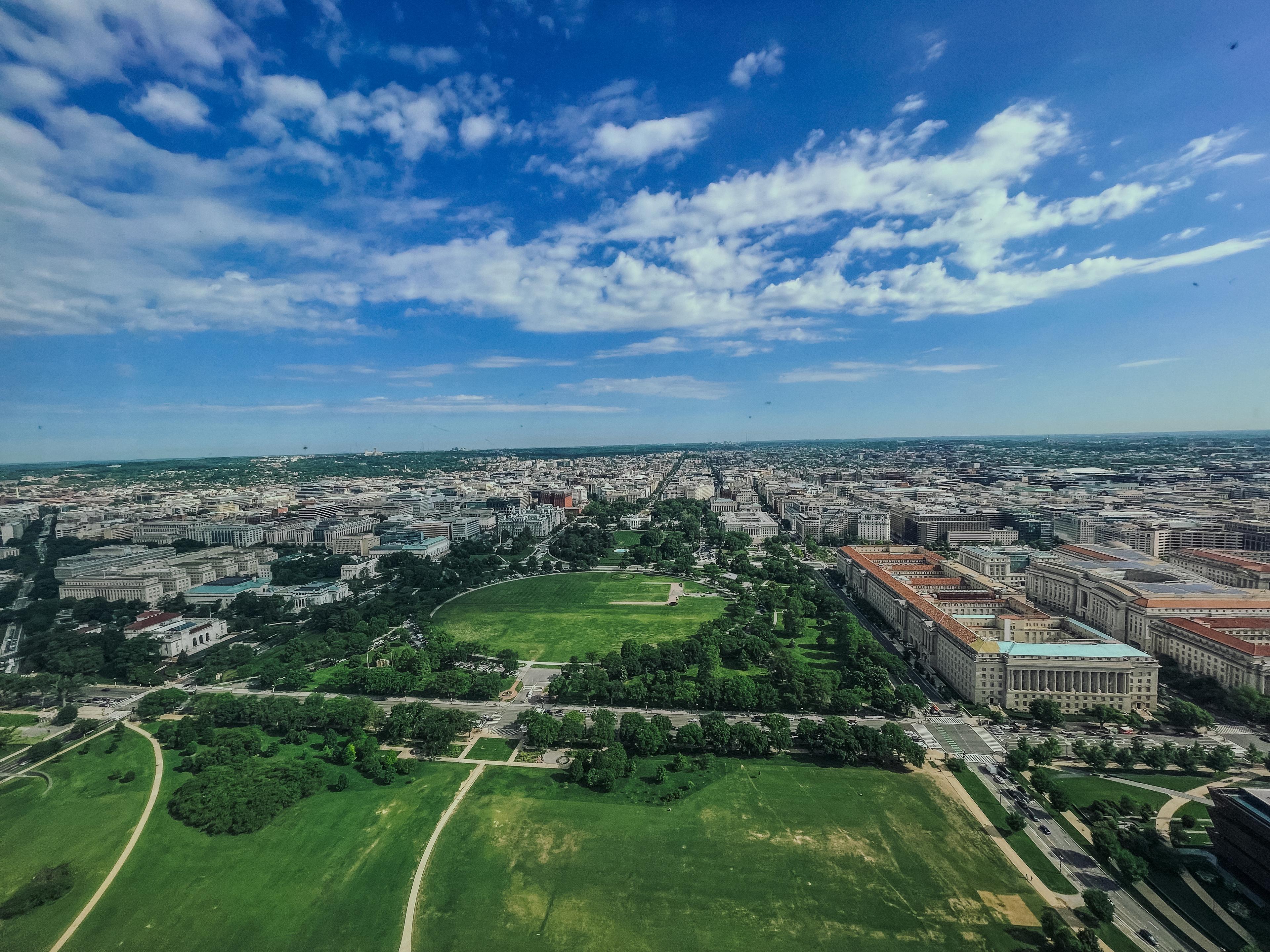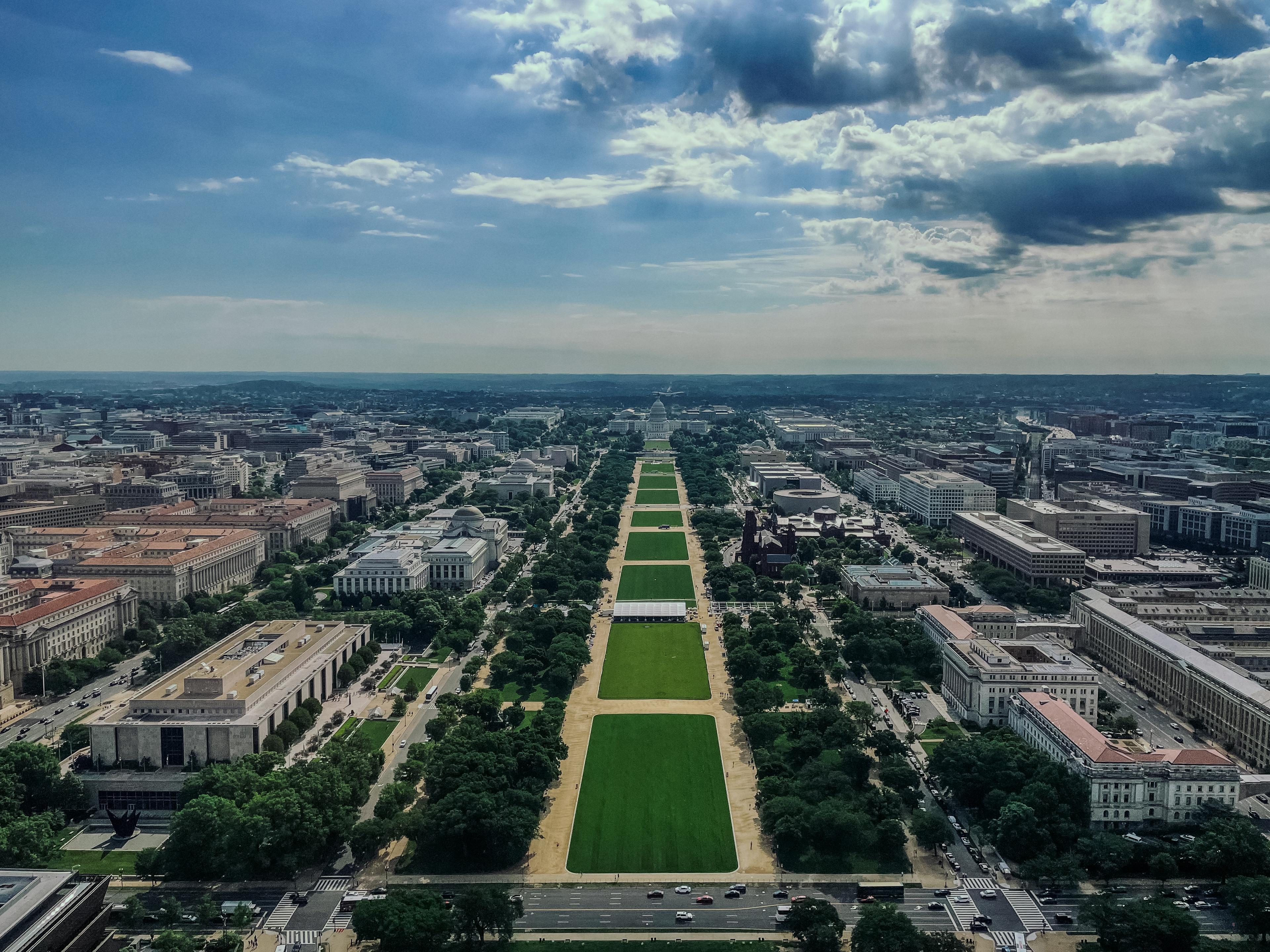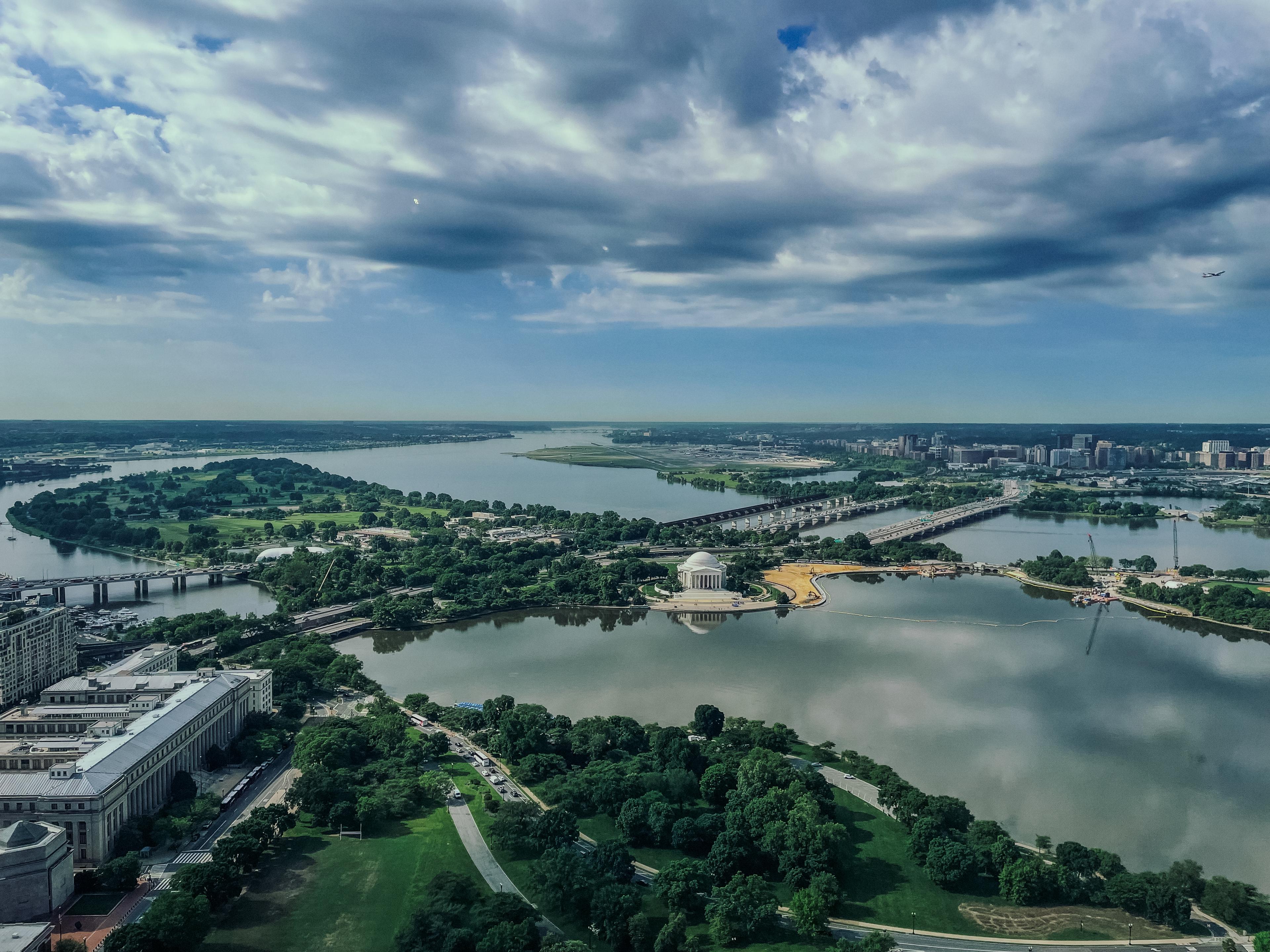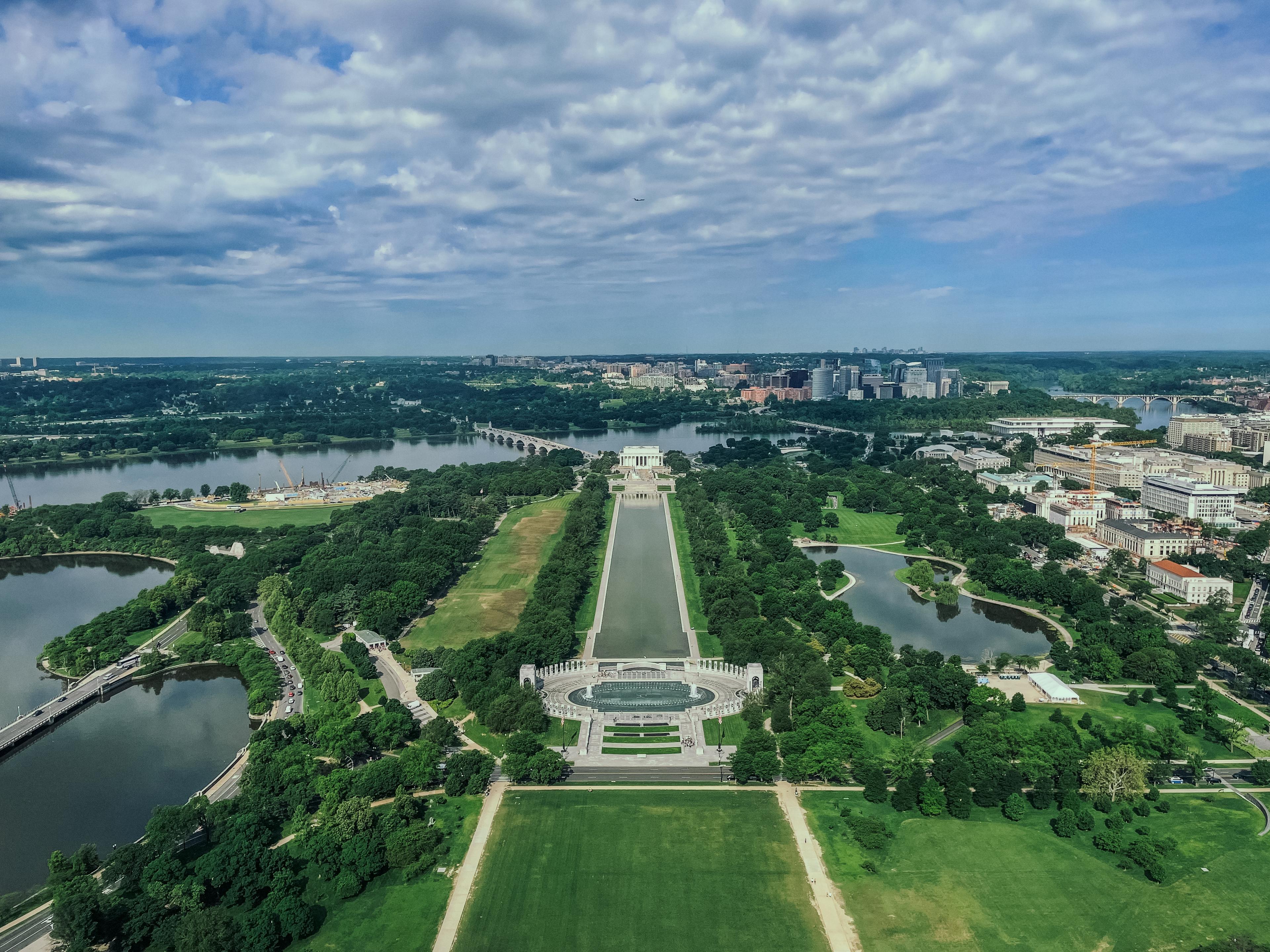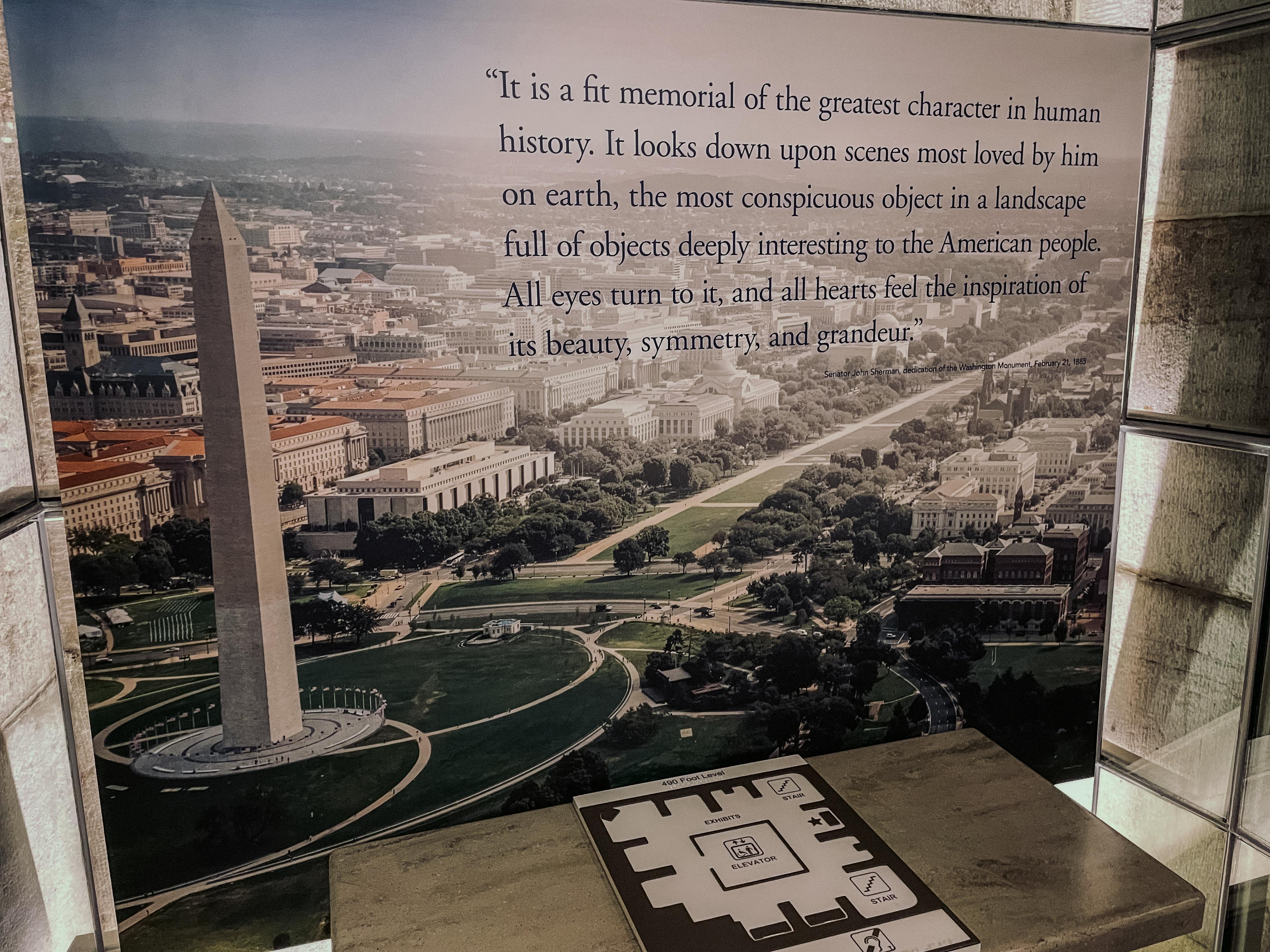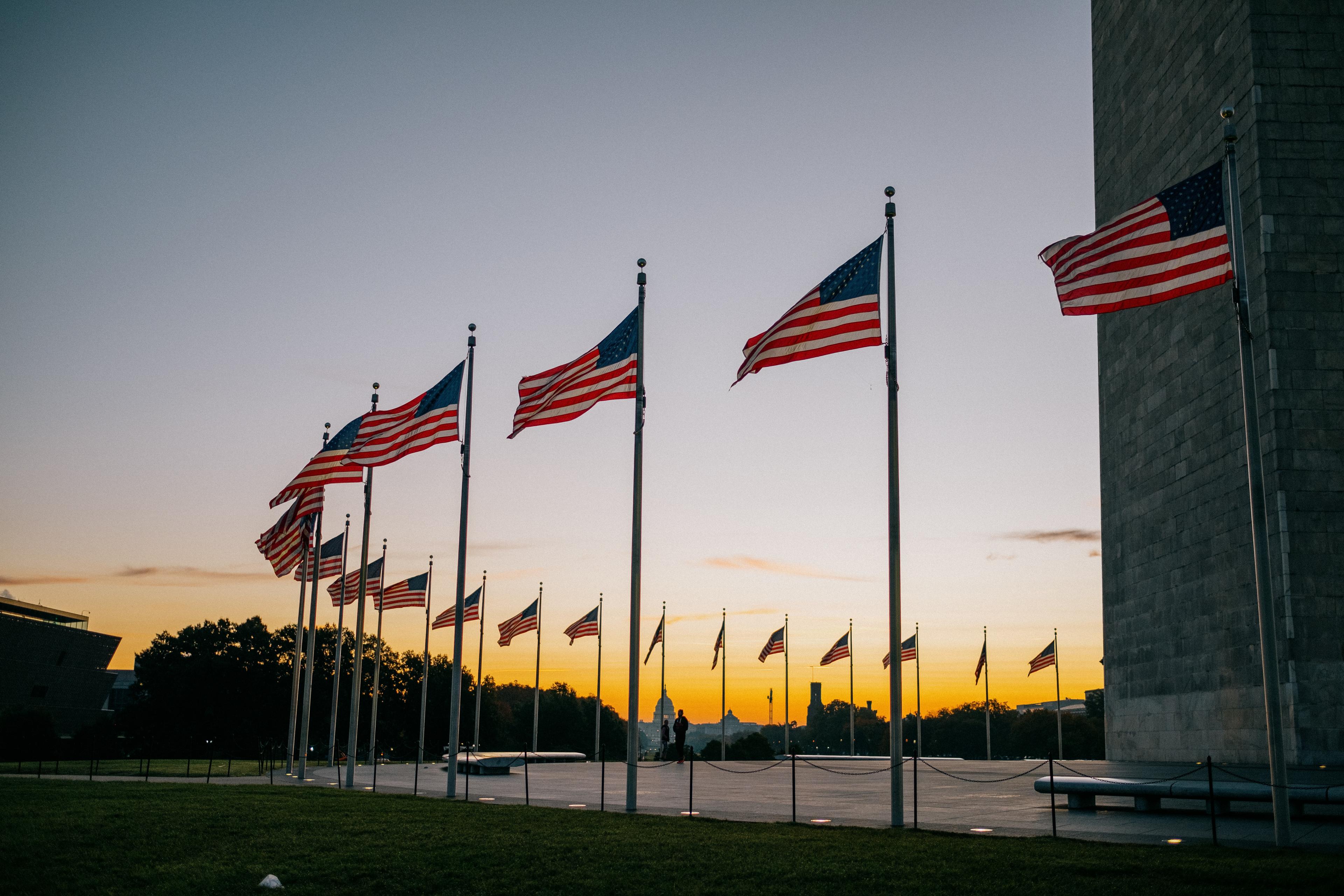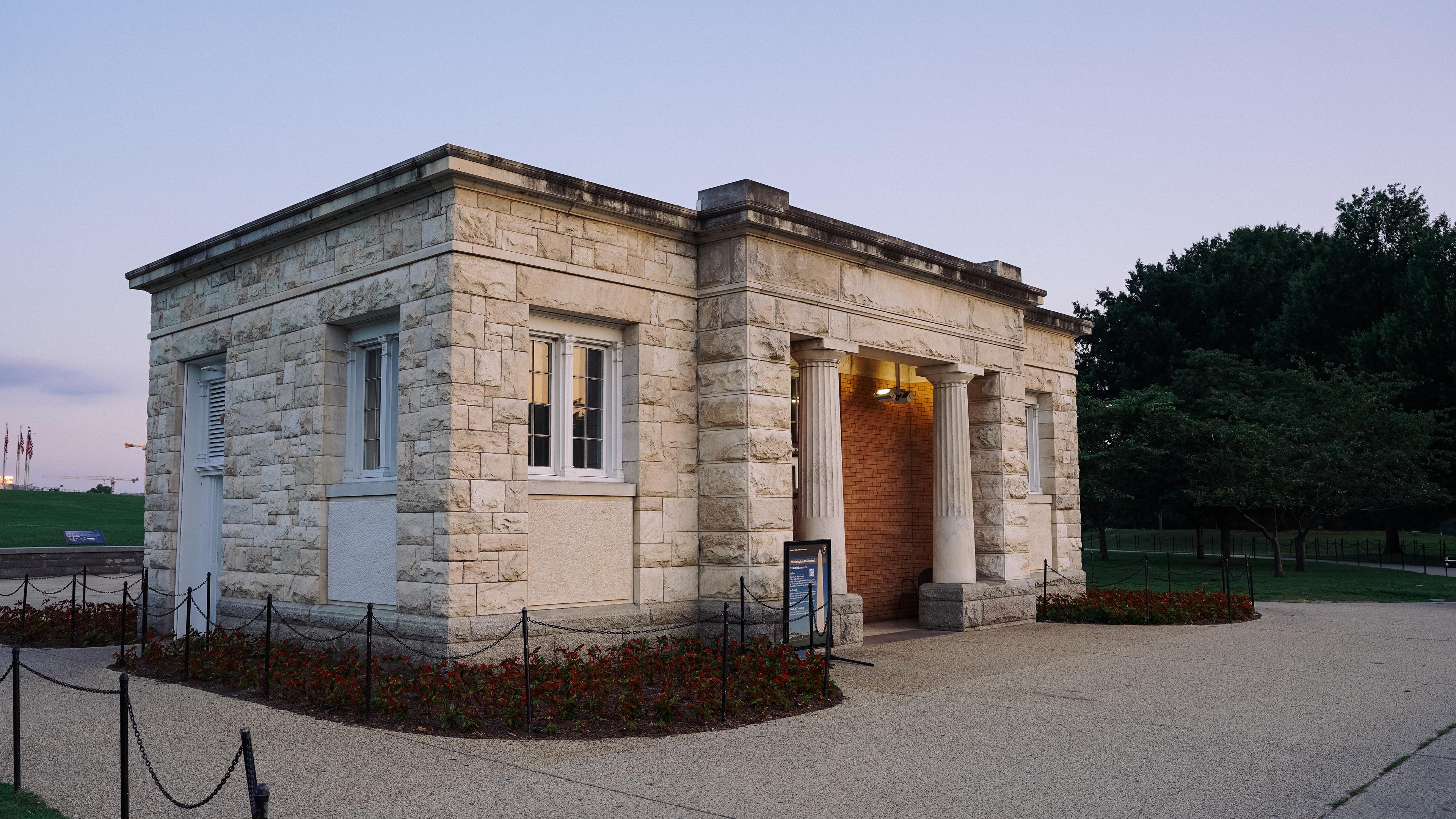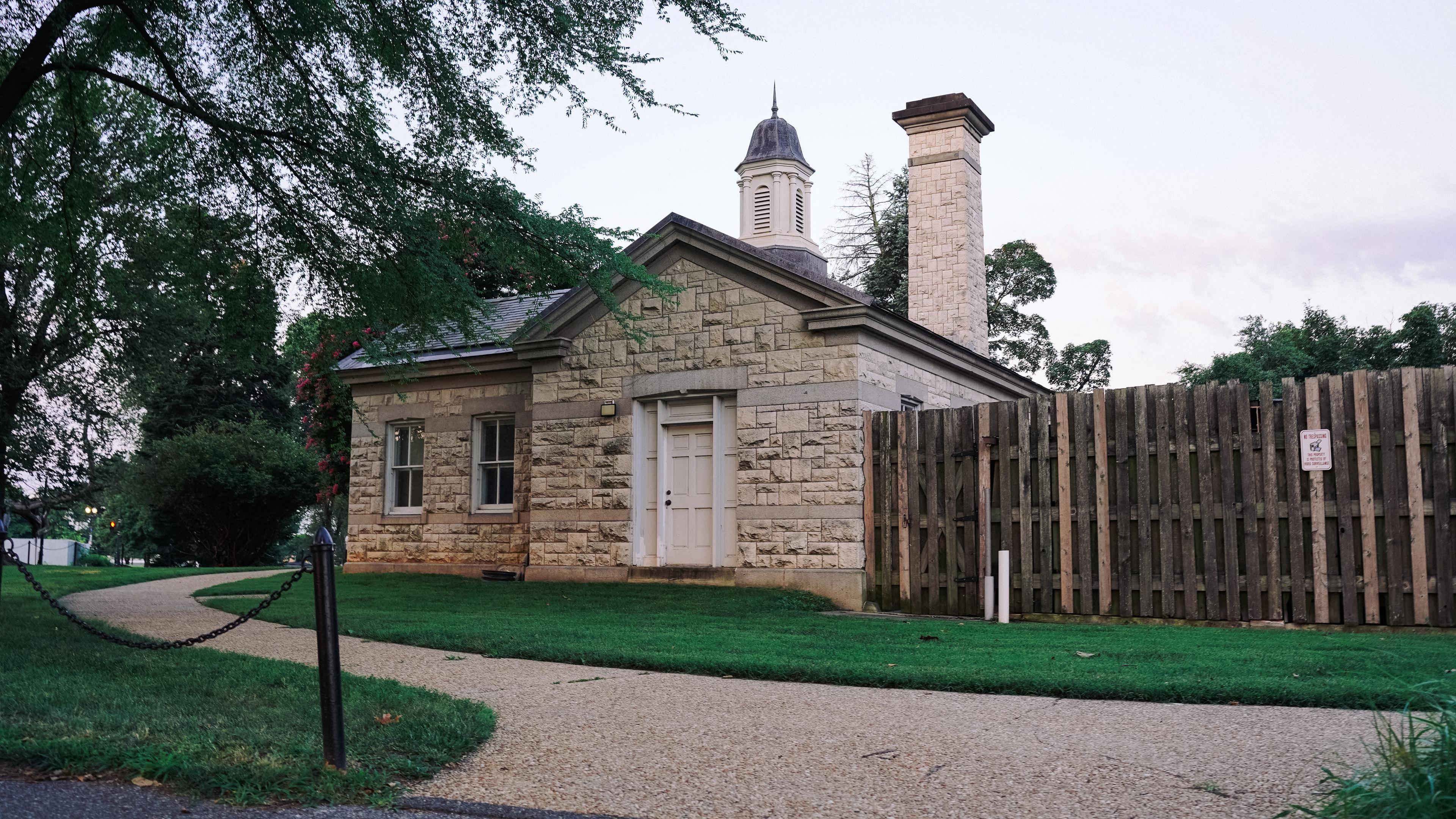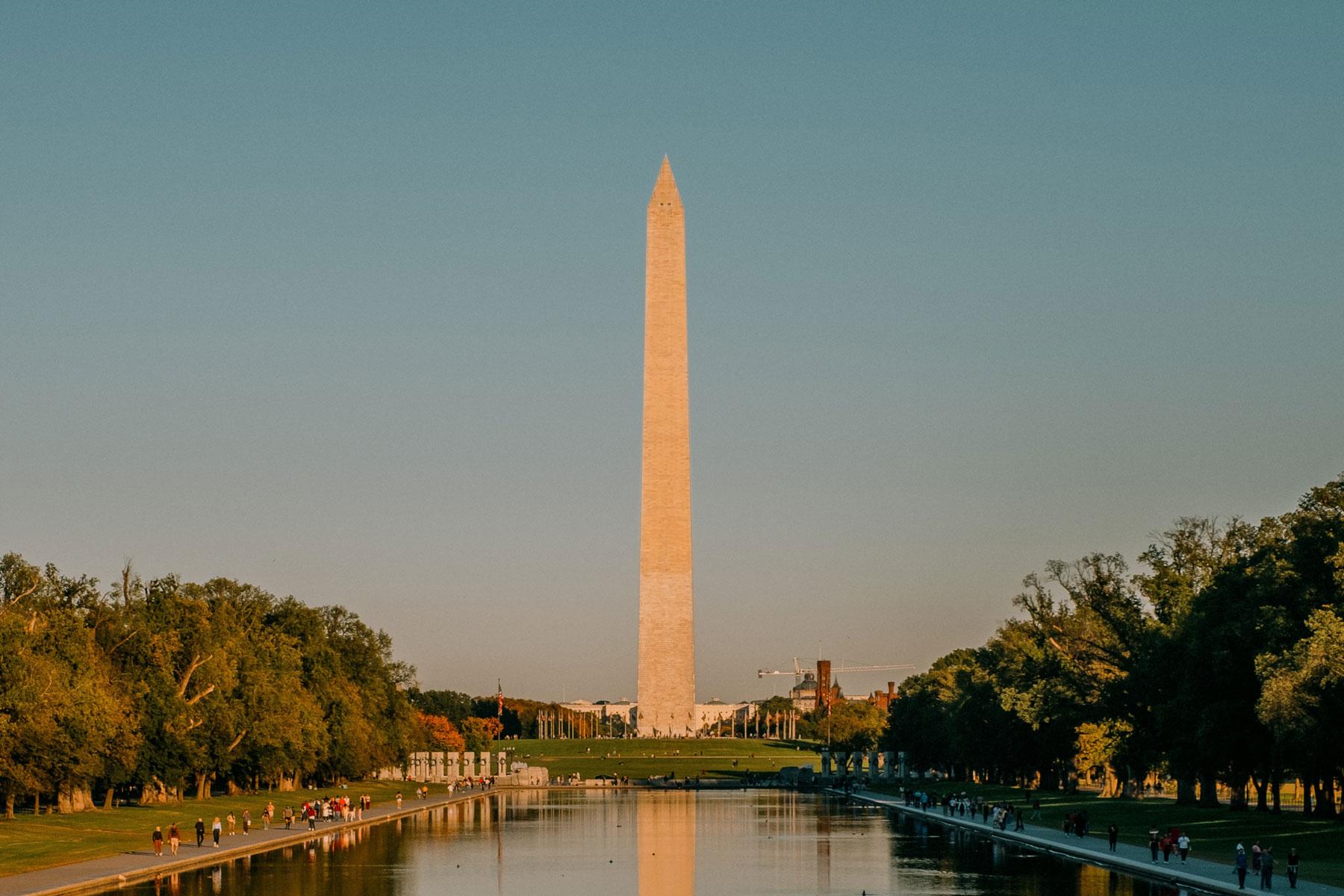
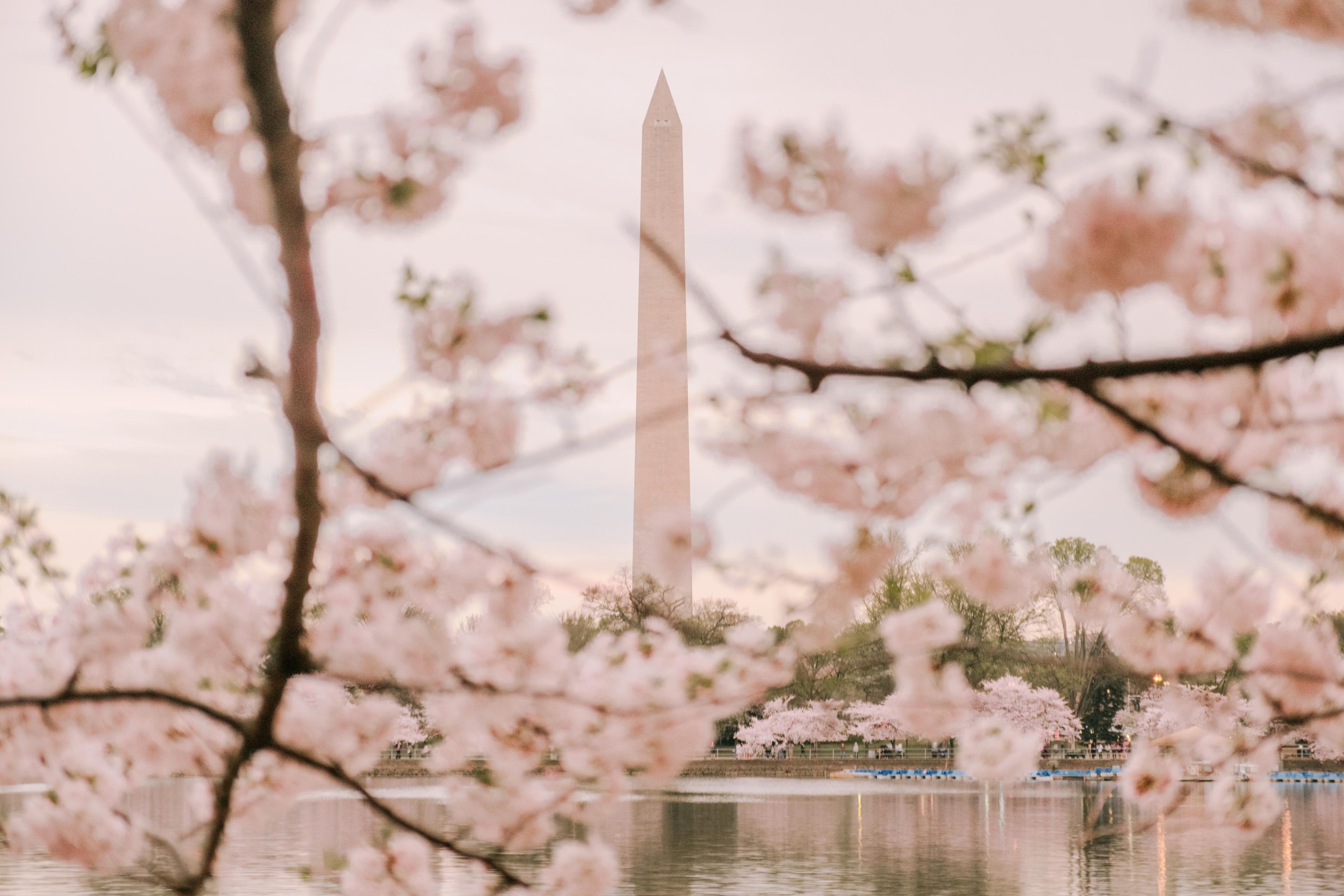
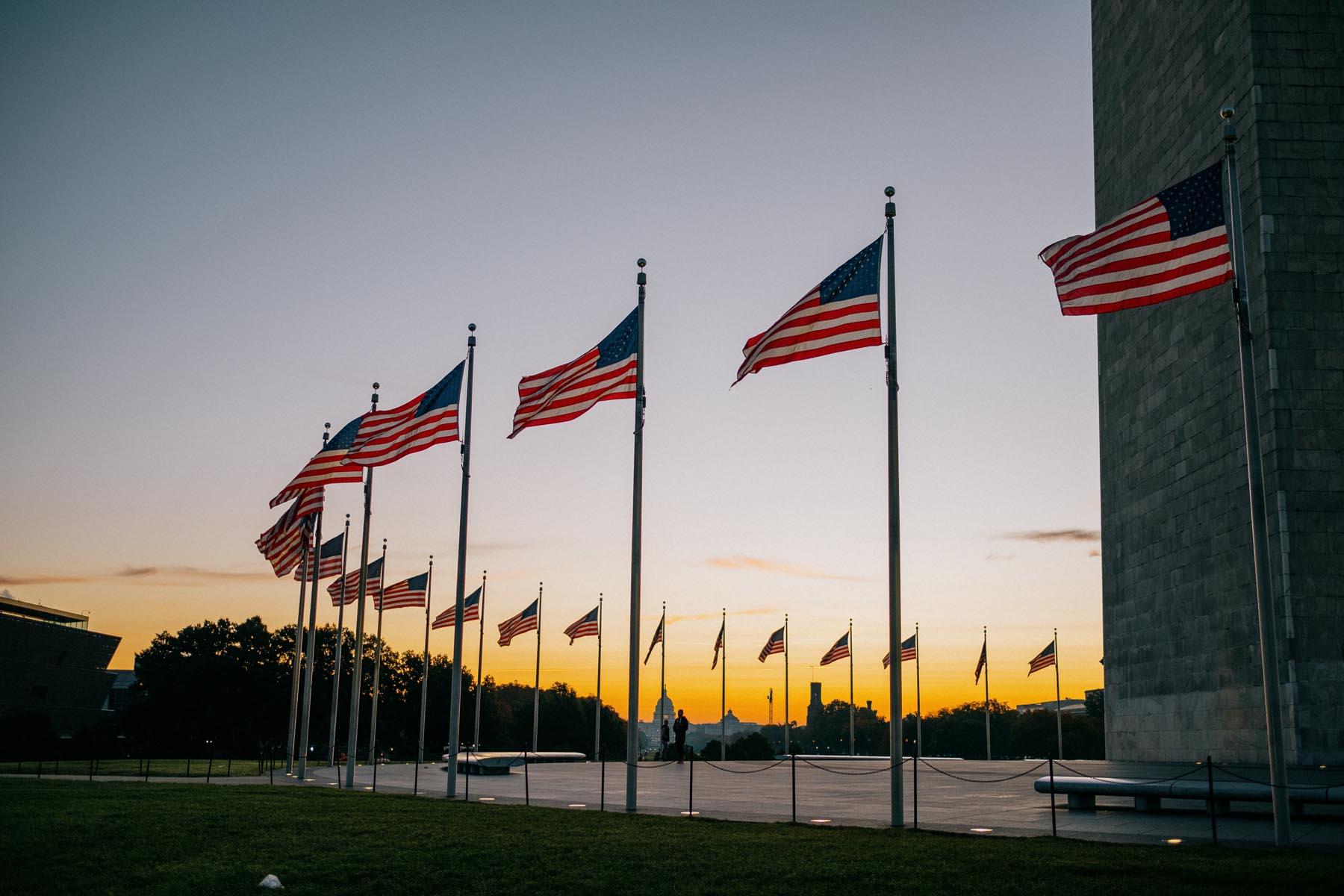
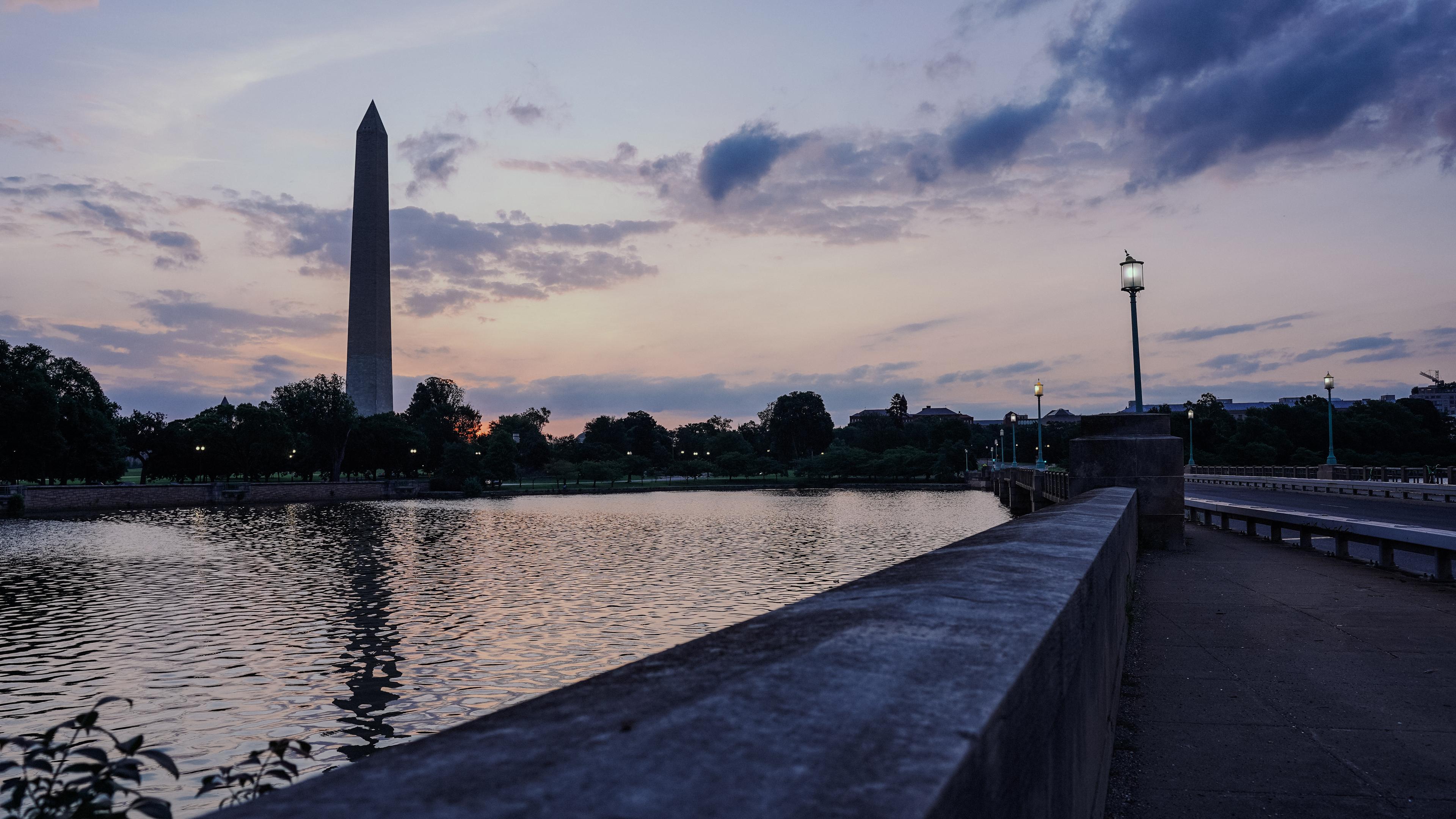
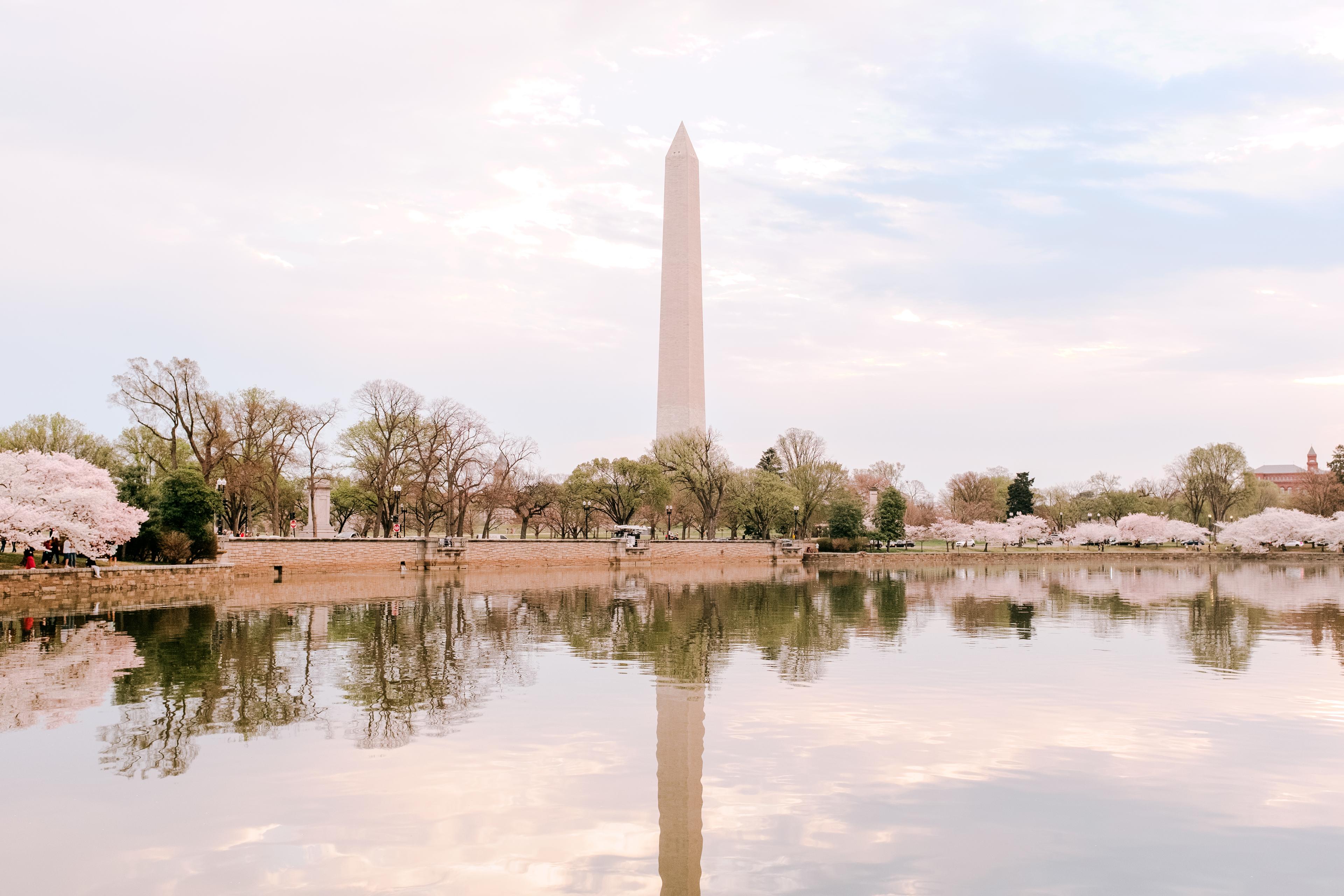
Washington Monument
2 15th Street NW, Washington, D.C.
Amenities
- Wheelchair accessible
- Restrooms — Daytime hours vary
- Gift shop — Daytime hours vary
- Museum - Daytime hours may vary.
- Food & drink — Retail options nearby
- Open 9:00AM–5:00PM daily; timed-entry tickets required.
During the government shutdown, this site will be closed. For more information, please visit: doi.gov/shutdown
Tickets are required for entry. Please reserve tickets online (reservation fee of $1 per ticket applies) or get free same-day tickets at the Washington Monument Lodge.
Please note that the Washington Monument is closed for routine maintenance one day per month. Specific dates can be seen on the National Park Service's page here.
George Washington (1732-1799) was the first President of the United States serving from 1789 to 1797. He originally gained fame during the French and Indian War, where his bravery and leadership were widely recognized. Washington was also involved in the political sphere, playing a significant role in the drafting and ratification of the U.S. Constitution. His leadership during the American Revolution as the Commander-in-Chief of the Continental Army was crucial in securing American independence.
During his presidency, he established many foundational practices and institutions—one such example is creating the first executive departments, including the Departments of State, Treasury, and War. Washington's administration also saw the establishment of the federal judiciary system through the Judiciary Act of 1789, which created the Supreme Court and lower federal courts. Washington's presidency set many precedents, including the tradition of a two-term limit, which was later codified in the 22nd Amendment.
The Washington Monument pays homage to his legacy and is an iconic symbol of Washington, D.C. Standing at over 555 feet, it is the tallest stone structure and obelisk in the world!
Construction began on the Washington Monument in 1848 but was halted in 1854 due to funding issues and resumed in 1879, with the capstone set in 1884. The Monument was dedicated on February 21, 1885, and opened to the public on October 9, 1888. Inside, there are 193 commemorative stones from various contributors, and an elevator provides access to the five hundred-foot observation deck. The Monument has been managed by the National Park Service since 1933.

Take a virtual stroll through this National Mall site
Videos
History
Timeline of events
George Washington is born in Westmoreland County, Virginia at the family plantation which would come to be known as Wakefield.
At just eleven years old, George Washington inherits his father's plantation, consisting of 250 acres and ten enslaved people.
Washington marries Martha Dandridge Custis.
Washington’s stepdaughter, Martha Parke “Patsy” Custis, passes away aged seventeen. Her death would have a profound effect on the family.
Beginning of the American Revolutionary war.
The Continental Congress declares its independence from Great Britain; two days later on July 4th, the Declaration of Independence is adopted by the Second Continental Congress, thus becoming Independence Day.
Washington achieves a decisive victory at the Battle of Yorktown, leading to the end of the American Revolutionary War.
The Treaty of Paris is signed, officially ending the American Revolutionary war with British recognition of American sovereignty.
Confederation Congress resolves that a monument to Washington be built.
Washington is inaugurated as the first President of the United States.
The Residence Act is signed into law by President George Washington, authorizing the President to appoint three commissioners to establish a new national capital and seat of the federal government at a site on the Potomac River between the Eastern Branch (Anacostia River) and the Conococheague Creek (near Hagerstown, MD).
The federal government purchases the land that would become the City of Washington and the National Mall from local plantation owners such as the Burnes and Carroll families. George Washington and Thomas Jefferson appoint Pierre L’Enfant to create the plan for a new federal city, as well as surveyors such as Andrew Ellicott and Benjamin Banneker.
Andrew Ellicott succeeds Pierre L’Enfant, who had been dismissed for insubordination.
Washington is unanimously reelected to his second term.
The Ellicott Plan is approved by Congress and President Washington; the original National Mall was 175 acres.
Washington’s Farewell Address.
Washington dies at Mount Vernon, Virginia.
The Washington National Monument Society is formed to plan a monument for George Washington.
The U.S. Government donates public land for the monument and the cornerstone is laid; President James Knox Polk attends the cornerstone laying ceremony.
The Monument reaches the height of 152 feet.
The Civil War severely slows down progress on the Washington Monument construction and its grounds were used as a remount station for the cavalry and as a cattle slaughterhouse.
Using material from Ripp’s Island, a small stretch of land in the Tiber Creek, construction began on the Babcock Lake ponds in the former Washington City Canal, designated as fisheries by the United States Commission of Fish and Fisheries. These ponds were used for breeding Eurasian carp (Cyprinus carpio), at the time a major food fish, as well as turtles and aquatic plants. These ponds would also be the start of the (now-defunct) National Aquarium in DC, also part of the US Fish Commission, relocated from Massachusetts that same year.
The second cornerstone laying ceremony occurs, marking the start of construction on the ‘second’ section of the Monument. The ceremony is attended by President Rutherford Birchard Hayes.
Engineers place both the marble pyramidion and the aluminum apex capstone on the monument's apex, completing the exterior of the Monument.
The monument is dedicated the day before Washington's birthday, attended by President Chester Alan Arthur.
The Survey Lodge is completed, built using leftover marble and granite from the Monument construction. Then known as the Boiler House, it was used to house the steam boiler that powered the Monument elevator.
The staircase is completed, and thousands of visitors climbed to the top of the Monument in the following period to the point where vandalism was considered to be excessive enough to close the Monument.
The Monument is closed to the public, and the Otis Brothers are contracted to convert the steam lift used for construction into a passenger elevator.
The custody of the Monument is transferred to the War Department.
The Monument is officially declared open to the public.
Following the completion of the Washington Monument, engineers held some fears over the effects that the Babcock Lakes’ water had on the surrounding Monument grounds. As a precaution, the lakes and their fisheries were relocated to new ponds built on what is now the Tidal Basin.
The Washington Monument lodge is opened to the public. Like the Survey Lodge, it was built using leftover building materials from the construction of the Monument.
To accommodate for the installation of a new electric elevator in the Monument, the Survey Lodge is expanded from its original ‘L’ shape to its current rectangular design.
The National Sylvan Theater opens on the grounds of the Washington Monument, dedicated by President Woodrow Wilson.
The electric power source for the Monument elevator is transferred to the local public utility, eliminating the need for the Survey Lodge. By the 1970s, the lodge would be converted into the headquarters for Mall Operations of the National Capital Parks Central unit. Today, it serves as a National Park Service Ranger station.
Administration of the Monument is transferred to the Director of Public Buildings and Public Parks of the National Capital.
Administration of the monument transfers from the War Department to the National Park Service.
Amid the Great Depression, the National Park Service in cooperation with the Public Works Administration, conducts the first extensive repairs of the exterior of the monument. During the renovations, thieves steal one hundred and seven gold-plated, platinum-tipped lightning rods valued at $856, or approximately $20,000 in 2024.
During WWII, temporary military buildings were built on the Washington Monument Grounds.
Eight 14-inch (36 cm) diameter holes were bored for red aircraft warning lights, one above each window on the pyramidion.
After extensive restoration work is done on the ground level lobby by the National Park Service, a bronze replica of Jean Antoine Houdon's statue of Washington is installed.
The National Park Service enters into a public-private partnership to restore the exterior and interior of the monument.
Workers repair the interior and exterior stonework of the Monument, and it reopens to the public.
The Monument is closed temporarily to allow workers to replace the elevator cab with one that has glass windows allowing visitors to see some of the 193 commemorative stones.
The Monument reopens to the public.
The Monument is closed to undergo renovations, including the installation of security screening areas in the aftermath of the September 11 attacks.
The Monument reopens to the public.
The Washington, DC area is struck by the 5.8-magnitude Virginia earthquake in the early afternoon, leaving more than one hundred and fifty cracks and rattling free stones both inside and outside the Monument. At the time, approximately twenty people were in the Monument at the top; fortunately, no injuries were recorded; however, the Monument was closed indefinitely in the following days.
Hurricane Irene, which had peaked as a Category 3 hurricane, strikes the DC area, compounding the damage from the earthquake. Water damage from the hurricane’s rainfall is discovered inside of the Monument.
The Monument is reopened to the public following extensive repairs.
The Monument is closed due to elevator reliability issues.
The Washington Monument reopens to the public with a new permanent security screening facility building, replacing the previously installed temporary security screening facility, in addition to the elevator renovations.
Key Features
This testament to George Washington is truly a marvel as it stands over 555 feet tall and the entire structure (including the foundation) weighs an estimated one hundred thousand tons. The Monument is made entirely of stone with steel beams that support the elevator shaft.
Cultural Impact
In addition to memorializing the first president of the US, the monument has been a backdrop for numerous historic events, protests, and celebrations, reflecting its role in the nation's history and its ongoing relevance as a symbol of American heritage.
Reflection Questions
High school learners: Our nation’s past is complex and often provokes reflection, especially as we look to the future. Here are a few questions to inspire deeper thinking:
- How did George Washington's leadership style contribute to his success as a military and political leader?
- What precedents did George Washington set as the first president that still endure today?
- How did the political and financial challenges of the mid-19th century impact the construction timeline of the Washington Monument?
Educational Activities
Other Resources
Interested in learning more? The following links will provide you with additional context and information:
